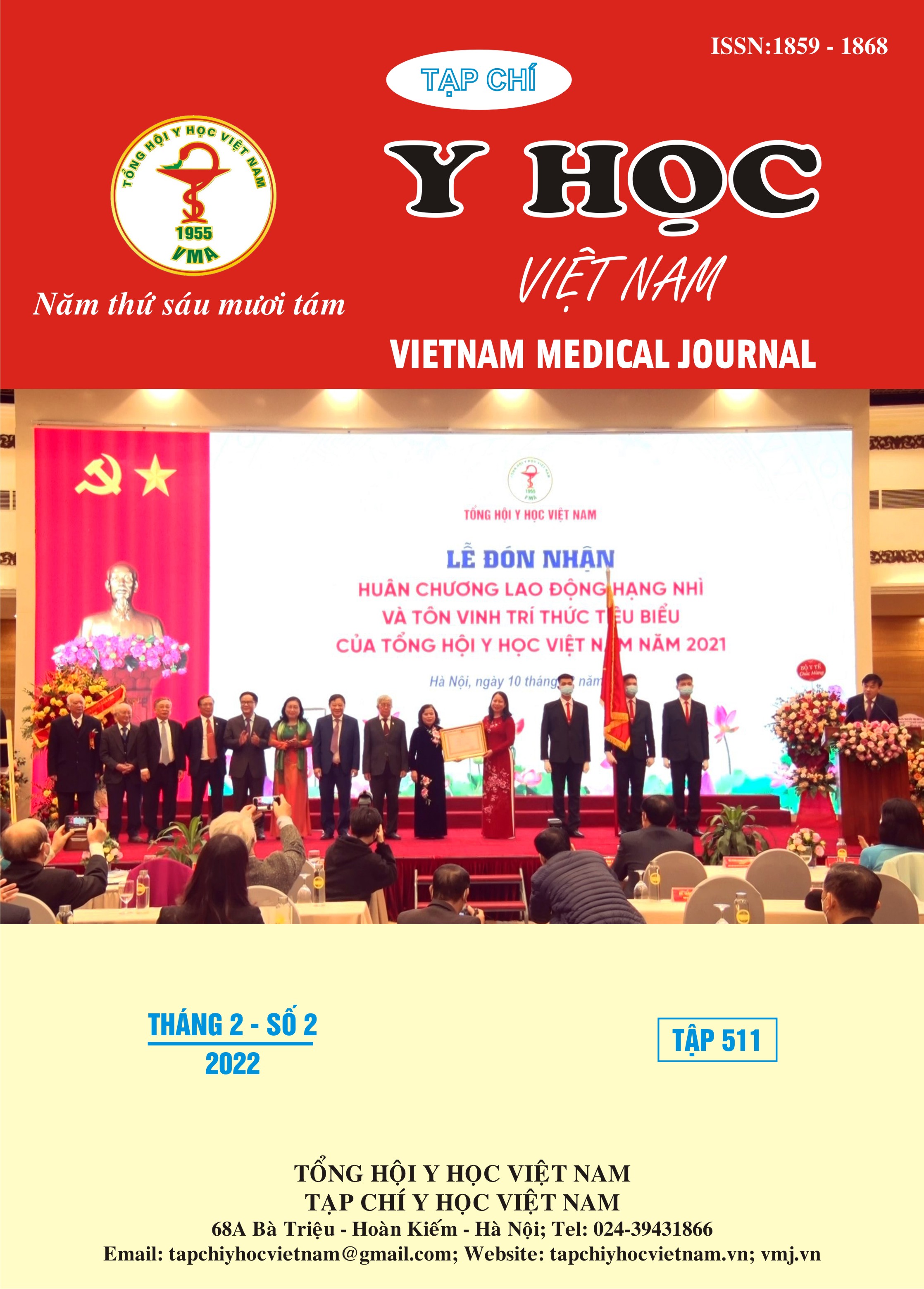MAGNETIC RESONANCE IMAGING OF POSTERIOR CEREBRAL ARTERY INFARCTION
Main Article Content
Abstract
Objective: To describe magnetic resonance imaging of posterior cerebral artery infarction Subjects and methods: A prospective, descriptive study of 68 patients with posterior cerebral artery infarction treated at the Department of Neurology, Bach Mai Hospital from March 2017 to March 2018. Results: Mean age was 64.79 ± 11.29, male/female ratio was 1.83. On CT scan normal brain parenchyma (58.8%), parenchyma hypodensity is supplied by the posterior cerebral artery (26.4%). There was no difference in injury rates between the two hemispheres. Infarction of the thalamus and occipital lobes was the highest (47.0%), and the temporal lobes (23.5%). MSCT showed major vessel occlusion (segments P1,P2,P3,P4) in 55.9%, 44.1% without major vessel lesions. The mean total infarct volume was 20.45 ± 19.08 cm3. The largest infarct volume is 61.6cm3, the smallest is 0.7cm3.
Article Details
Keywords
Posterior cerebral artery infarction, magnetic resonance imaging
References
2. Nouh A, Remke J, Ruland S. Ischemic posterior circulation stroke: a review of anatomy, clinical presentations, diagnosis, and current management. Frontiers in neurology. 2014;5:30.
3. Caplan LR. Caplan's stroke. Cambridge University Press; 2016.
4. Arboix A, Arbe G, García-Eroles L, Oliveres M, Parra O, Massons J. Infarctions in the vascular territory of the posterior cerebral artery: clinical features in 232 patients. BMC Research Notes. 2011;4(1):1-7.
5. Hypertension TFftMoAHotESo. Guidelines for the management of arterial hypertension. Eur Heart J. 2007;28:1462-1536.
6. Yamamoto Y, Georgiadis AL, Chang H-M, Caplan LR. Posterior cerebral artery territory infarcts in the New England medical center posterior circulation registry. Archives of neurology. 1999;56(7):824-832.


